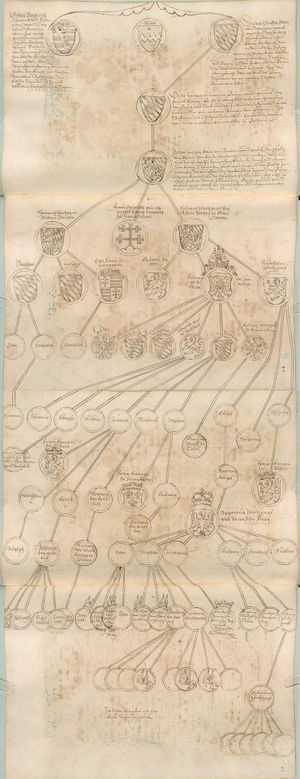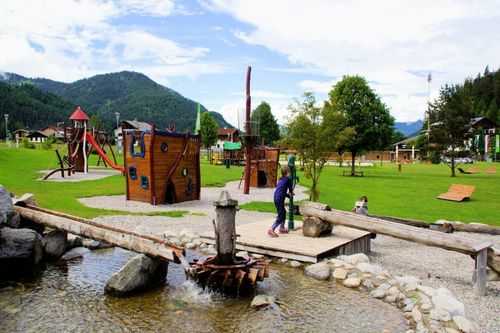Globe of Martin Behaim





Elder Got World Globe made in Nuremberg in 1492/93. The globe was commissioned by the Nuremberg City Council under the guidance of Martin Behaim (1459-1507), a Nuremberg merchant’s son who had emigrated to Portugal. The portrayal of the globe is based on both ancient and medieval sources as well as on the findings of Portuguese expeditions. The 1492 discovered America is missing. Since the 19th century Behaim and his globe were an integral part of the Nuremberg picture of history and also under colonial-political omens received. In 1937, the Germanic National Museum acquired the globe with financial aid a. a. by Adolf Hitler (1889-1945).
Table of Contents
The construction of Behaim globe
The Behaim Globe in the Germanic National Museum in Nuremberg is regarded as the world’s oldest surviving earth globe (1492/93). Predecessors did not come to us.
The globe has a diameter of 51 cm. After the last investigations with X-rays (1977) and with computer-tomography (1992) four layers of glue-reinforced linen were laid on the production by the bronze caster Hans Glockengießer (died 1521) and the calculation master Ruprecht Kolberger (died 1505). On the composite sphere six layers of paper were glued in whole sheets. Over it came thin leather, which in turn was covered with paper. This paper was painted and scripted. The polar axis is attached with two eyelets on an inner ring, which runs around a second outer meridian ring. Both rings are supported by a three-legged forged iron frame. In 1510 a heavy brass horizon ring with suns and star signs was added.
Original image of the globe and copies
Given the long history of the globe, it is difficult to identify the original image and the original inscription of the globe. Already in the 17th century, the first Nuremberg scholars tried to determine the scriptures on the globe and to draw the map image of the globe.
In 1847, the first copy was made of the Bibliothèque nationale de France in Paris. There were further copies of this Parisian copy z. For example, for the World‘s Fair in Chicago in 1892 and on the occasion of the 400th anniversary of the discovery of America for Madrid and for Lisbon. Only the Berlin copy in the German Historical Museum is said to have been taken from the original owned by the Behaim family.
The globe darkened strongly and was restored in 1823 and in the 1930s, with writings and pictures painted over and applied again. New research results on the original image and inscription of the globe are still to be expected in view of new technical possibilities with lighting technology.
Martin Behaim and the globe
The manufacture of the globe was under the supervision of Martin Behaim (1459-1507), who was born on October 6, 1459, the son of a respected merchant family in Nuremberg and trained as a merchant in Antwerp. Behaim came to Lisbon in 1484 and married the daughter of Jobst Hurter (1430-1495), the Flemish governor of the Azores island of Fayal. There he was born a son in 1489. With this marriage, he was able to rise in Portugal in the better company and gather much information. Because of his merits, he is said to have been beaten by the king, according to later sources by the king. In 1507 he died in Lisbon.
From 1490 Martin Behaim stayed in Nuremberg for family matters. There was at that time the center of innovative technology and art and the knowledgeable humanists who were busy with the famous Schedel’s World Chronicle (1492). With their knowledge and help, the globe became the "Erdapfel", Made in 1492/93. Nothing specific is known about the respective share of the participants.
The map image of the globe
In order to present the image of the world on a globe, the manufacturers needed appropriate templates, maps and written sources. The map image of the globe is essentially based on Claudius Ptolemy (c. 100-178), the most important cartographer of the second century. Above all, the too large expansion of Asia illustrates this.
In the Atlantic and on the coast of Africa, a Portuguese portulan card, that is, a map, which mainly ports, winds and currents showed, and the Behaim is said to have brought, have been template. The Portuguese usually kept their secrets strictly, so that no foreign competing power could gain knowledge of the sea routes. Contemporary Portuguese portulans have not survived, but there are two maps made in Italy by the cartographer Henricus Germanus Martellus (probably from Nuremberg, died 1496) from 1488/89. They show the image of the world at the time of the journey of Christopher Columbus (1451-1506) with up-to-date information of the Portuguese rides up to 1488 by Bartolomeu Dias (1450-1500) reached the southern tip of Africa. The design especially of South Africa resembles the representation of the globe.
The 1492 discovered America is missing on the globe.
The meaning of the globe
There are some hypotheses about the motif for making the globe. Perhaps Behaim wanted to clarify with him the way west towards India, which had been discussed at that time because of the plans of Christopher Columbus in Lisbon. With the rotatable globe, he wanted to convince but rather the Nuremberg merchants, on which eastern roads to India, there was the coveted spices to get. The globe details areas where spices were grown or traded. Relevant sources, such as those by Marco Polo (1254-1324), were written directly on the globe. This should animate Nuremberg merchants to invest. The globe was paid by the city council and placed centrally in the town hall of the city of Nuremberg, which underlines its special significance. Johannes Schöner (1477-1547), Martin Waldseemüller (about 1470 – about 1518/21) and many others created more globes after his model.
In the 17th century, the globe was handed over to the Behaim family. He later landed in the store and was neglected there, as a bump shows. It was not until the 19th century that the globe was brought back into the public consciousness in the course of the legend formation around the merits of Martin Behaim. Thus, the nationalist Nuremberg city librarian Friedrich Wilhelm Ghillany (1807-1876) in 1853 put forward the thesis that the German scientist Behaim had provided the basis for the success of the Portuguese in the history of discovery.
The high symbolic significance of the globe was especially evident when the family wanted to sell it to America in the 1930s. Then brought in 1937, the Nuremberg Mayor Willy Liebel (1897-1945) and Adolf Hitler (1889-1945) together on the family demanded purchase price. They donated the globe to the Germanisches Nationalmuseum, one of whose most valuable objects he counts.
Related Posts
-

Haus bavaria – historical lexicon bavaria
House Bavaria Emerging term in the late Middle Ages, which also includes the geographical area of the state of Bavaria, as well as the ruling dynasty…
-

Robber knights – historical lexicon of Bavaria
Raubritter Raiding knights are understood to be nobles who allegedly had been in need in the late Middle Ages because of the general social change and…
-

Travel Guide karwendel – karwendelgebirge, bavaria – tyrol
The Karwendel travel guide Welcome to my personal Karwendel travel guide ! In the guide I’ll show you which beautiful corners the Karwendelgebirge has. I…
-

Hotel with archery in Bavaria, the resort Friedrichshof
Hotel with archery and other leisure activities Do you know the feeling of being the target of everyday stress? Does life sometimes go too far for you…
